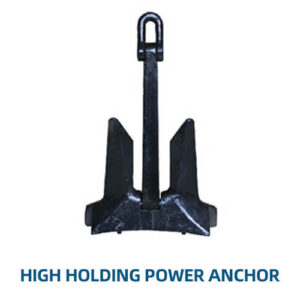Key Features of Mooring Chocks:
- Design and Construction:
- Material: Typically made from strong, durable materials such as cast iron, steel, or stainless steel. These materials are selected for their strength, resistance to corrosion, and ability to withstand harsh marine conditions.
- Shape: Often designed with a U-shaped or semi-circular channel that guides the mooring line smoothly and prevents it from chafing or slipping. Some designs may include a curved or rounded profile to accommodate different line sizes.
- Mounting: Usually mounted on a dock, pier, or ship using bolts or welds. The base of the chock is designed to provide a secure and stable attachment to the structure.
- Types:
- Standard Mooring Chocks: Basic design used for general mooring applications. Provides a simple, effective way to guide and secure mooring lines.
- Double Mooring Chocks: Equipped with two channels to handle multiple mooring lines simultaneously, often used in busy docks or for larger vessels.
- Spring-Loaded Chocks: Includes a spring mechanism to absorb shock and reduce tension on the mooring lines. Ideal for applications where dynamic loads and vessel movements are expected.
- Custom Chocks: Tailored to specific operational requirements or unique vessel sizes and types. These can include specialized shapes or configurations based on the needs of the facility.
- Applications:
- Dock and Pier Mooring: Used to guide and secure mooring lines on docks and piers during vessel berthing. Helps manage line tension and prevent damage to both the dock and the vessel.
- Ship Mooring: Installed on ships to guide mooring lines when docking or securing alongside other vessels or structures.
- Marine and Offshore Platforms: Employed on floating platforms, oil rigs, and other offshore installations to manage mooring lines and ensure stability.
- Performance and Benefits:
- Guidance: Provides a controlled path for mooring lines, reducing the risk of chafing, abrasion, or accidental release.
- Load Distribution: Helps distribute the load of the mooring lines evenly, reducing stress on the lines and the mooring hardware.
- Durability: Constructed from strong materials designed to withstand the harsh marine environment and heavy loads.
- Maintenance and Care:
- Inspection: Regularly inspect mooring chocks for signs of wear, corrosion, or structural damage. Check the mounting bolts and connection points for integrity.
- Cleaning: Clean the chocks to remove marine growth, debris, or contaminants that could affect their performance or appearance.
- Repairs: Address any damage or issues promptly to ensure the chocks remain functional and safe for use. This may involve repairing or replacing damaged components.
- Safety Considerations:
- Load Capacity: Ensure that the mooring chocks are rated for the specific load requirements of the mooring operation. Overloading can lead to failure or damage.
- Proper Installation: Ensure that chocks are securely mounted and positioned to provide effective guidance and support for mooring lines.
- Line Management: Use appropriate line sizes and types for the mooring chocks to ensure proper fit and performance.
Advantages of Mooring Chocks:
- Effective Line Management: Provides a controlled and secure way to guide and manage mooring lines, reducing the risk of damage and ensuring stability.
- Durability: Built to withstand heavy loads and harsh marine conditions, making them suitable for long-term use in various marine environments.
- Ease of Use: Simple design allows for straightforward operation and maintenance, with minimal moving parts.
Considerations for Mooring Chocks:
- Selection: Choose the appropriate type and size of mooring chock based on the specific needs of the docking or mooring operation and the type of vessel.
- Corrosion Protection: Ensure that the chocks are treated or coated to resist corrosion and extend their service life in marine environments.
- Compliance: Follow relevant industry standards and regulations for the design, installation, and maintenance of mooring chocks to ensure safety and performance.
Mooring chocks are essential components in marine operations, providing a reliable and durable solution for guiding and securing mooring lines. Their effective design and construction help ensure safe and efficient berthing and mooring of vessels.






